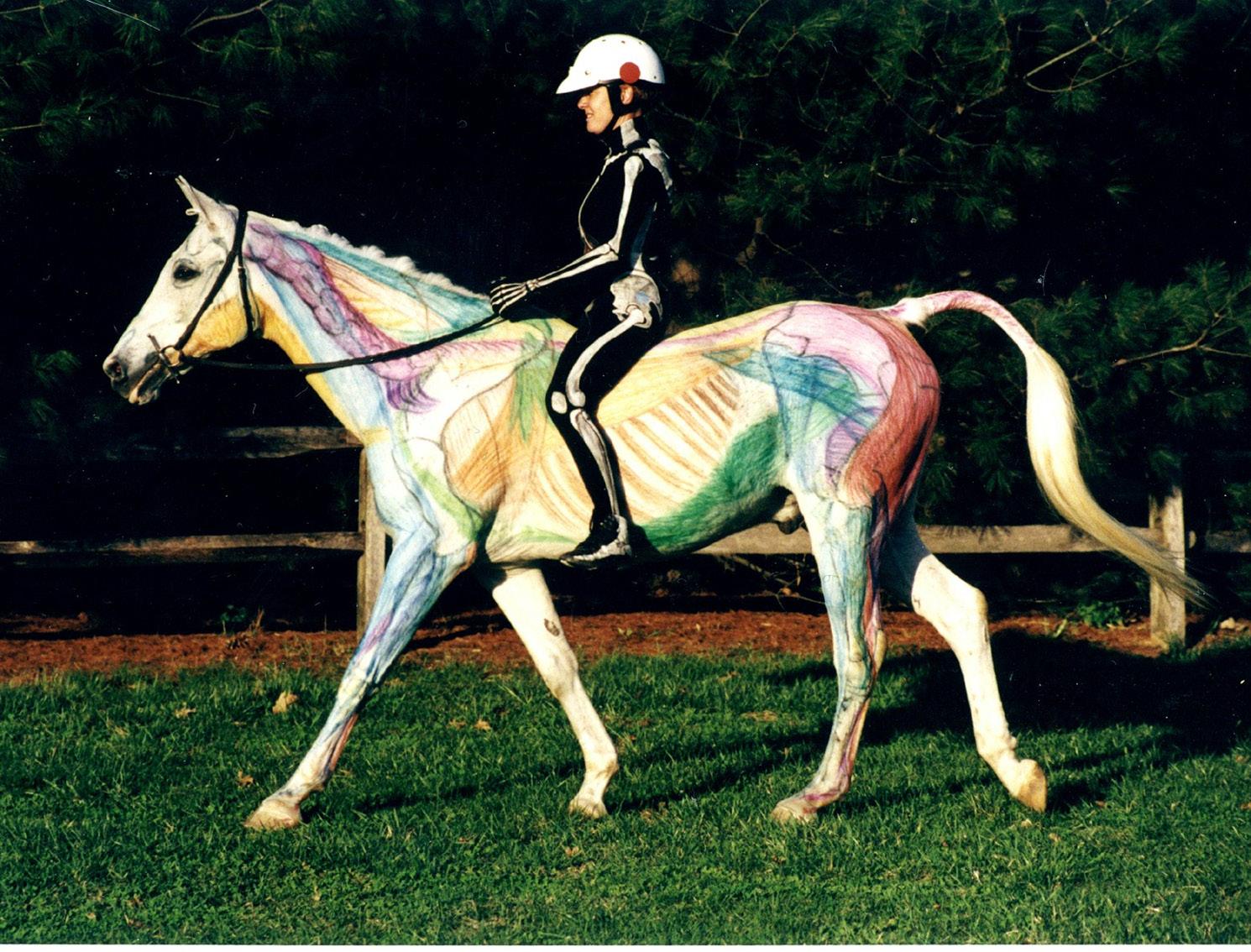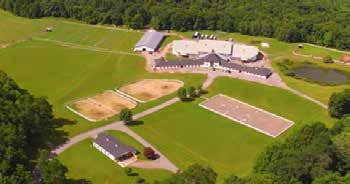
9 minute read
Business matters
Imitation is Not Always a Form of Flattery
– The Professional Ethics of Using Other People’s Work
Advertisement
By Peggy S. Brown
Training and working with horses is an ageold pursuit going back even before the earliest horse book, On Horsemanship, written by Xenophon in 355 BC. Xenophon taught about horse care, bitting and training and much of his advice and wisdom applies to methods still in use today. Many other books of horse instruction have been written throughout history and even today the publishers of horse books are still very active. Nowadays besides books, we also have videos, YouTube, the internet, educational horse expos, horse clinics and more and more avenues that teach us about training, caring for, and riding horses; there’s so much information available and yet the horse world is a small world and horses are horses, and if you think about it not much information is really brand new.
Most everything we are as horse people comes from things we have learned, whether from personal experience, from instructors, perhaps clinics or expo presentations, or from other educational media we have experienced throughout our lifetime. In the modern horse-world we often see trainers and coaches teaching techniques that may be new and different or techniques that may well have been copied from someone else’s work. Keep in mind however that most things dealing with horses have been around, perhaps in slightly different ways, for a very long time and, outside of breakthroughs in scientific discoveries and technology, are usually not all that new.
This means that presenters, clinicians, website owners, riding instructors and trainers should be mindful and take care with what they teach and how they teach it. In this Facebook, internet world it is far too easy to click a few keys and copy other people’s work and then casually pass it off on your own website or as your own idea. Using someone else’s work, copying their ideas, their words, their illustrations, their exercises, and even in some cases their trademarked or copyrighted materials and passing it off as ones’ own work is stealing.
I was recently involved with an individual who had produced a video, which they fully intended to sell for profit. The video was presenting and teaching the principles of an already well-known training and teaching technique. This person had the audacity to actually copy the illustrations from a book on the subject, making their own rather crude drawings and tracings and then trying to pass the information and ideas off as their own work. This was a young instructor, not very experienced, and shocked to discover that what they had done was illegal and a distinct copyright violation. They thought that redrawing the illustrations and changing the words in the book around a little bit made it ok to do.
Wrong!
How about an instructor who wants to become a clinician or presenter at horse expos? Perhaps they see someone else do a presentation that they really like and then they decide to copy it, with a few minor changes of course, and then perhaps they go on even further perhaps to use someone else’s ideas to write a book, shoot a video, or to do expo presentations on their own. Where are this person’s professional ethics here? Transparent and weak individuals, aren’t they?
A professional knows and understands that the correct thing to do is to give credit where credit is due and to take care not to take other people’s work and pass it off as ones’ own. For example, when I teach a clinic, I try to give credit to the person or source where I got the information. For instance, I might say “I learned this wonderful breathing technique directly from Sally Swift” or “I found this new jumping pattern in Jim Wofford’s book Modern Gymnastics” or “Here’s a great illustration of haunches in from Susan Harris’s poster series on lateral work”. Please understand that of course there are many things we learn that are out there in the great common pond of horse wisdom, but professionals know that when we use another professional’s work, we should try very hard to give credit where credit is due.
A professional must understand and be clear on copyright laws and trademark restrictions. Publishers and authors take these things very seriously and have not put the time, money, and work into creating a book or video to then have it be stolen and passed off by others as their own work. When you wish to use a quote from another’s work or borrow a photo or illustration from a book, take a statement or illustration off the internet, you must ask for written permission from the author and/or the publisher!
This is not as difficult as it seems - drop the author or publisher a business type letter or email, inform them of what you would like to use, why you would like to use it, where you would like to use it, and ask if you could have their permission to use it. Then when you do use that photo, or exercise or illustration make sure to write “used with the kind permission of ____”. This is the proper thing to do, the polite thing to do, and most importantly, the legal thing to do.
What about trademarked ideas or presentations? Be careful here as usually someone who has taken the time to trademark something may really decide to step up to defend their product or idea – and it may well be in court. And even if they don’t follow through and contact their attorney consider what you have done with this organization’s or person’s idea, you’ve copied it or even stolen it. What does that say about your integrity as a professional? When in doubt always ask permission, this is certainly not an instance where imitation is considered a form of flattery.
A professional should stand tall enough in their boots to be able to credit those other instructors, judges, authors and illustrators who have had an impact upon their lives and who have taught them important lessons. You probably won’t of course remember to credit every single idea over the years that has crossed your path but please do your best to give credit where credit is due. Ask permission to use the ideas and works of others and remember even if you think you have gotten away with using the work and ideas of others, there may well be other knowledgeable professionals and horse people quietly watching what you do. You will never make a mistake by following correct professional ethics and honest practices – teach fairly, teach honestly, teach well. About the author: Peggy Brown is a Level IV Advanced Centered Riding and Driving Clinician from Toledo, Ohio. She is classified as
an Expert Instructor and Instructor Educator by the American Riding Instructor Association and was honored to be named the 2005 Instructor of the Year. Peggy generously shares her years of experience in competing, handling and training horses and riders in all disciplines including hunter, jumper, dressage, western, games and speed events, combined and pleasure driving, and trail competition. Peggy and her Haflinger mare Ulie were North American Champions in Versatility and also in Games Events; they were also long listed for the United States Equestrian Team in Advanced Single Pony Combined Driving. A firm believer in solid foundation training for horse and rider, Peggy helps riders learn to use their bodies wisely to prevent injury and to communicate clearly, in balance and harmony with their horse. Working domestically and internationally, Peggy as the Visible Rider™ wears a bone suit that helps riders learn more about their own bodies and how the rider’s position affects the horse’s body. She has taught riding and driving in North America, Australia, Iceland, Scandinavia, Japan, Egypt, Israel, Europe, and the United Kingdom. In 2011 The Japanese Racing Association sponsored Anatomy In Motion™ to present at two of their Jockey training schools. Peggy also performed with Susan Harris in Vienna, Austria for the first European Centered Riding Symposium. Peggy’s goals are to help horses improve performance and comfort levels by helping their riders and drivers establish sensitive, balanced, independent seat and hands. Peggy lives with her husband and animal friends at Walnut Hill Farm in Maumee, Ohio. ™
www.anatomyinmotion.com
Schools, Colleges and Universities with Equine Programs

Name of school:
Averett University
What degree or certificate programs are offered? Bachelor of Science Degree in Equestrian Studies. There are 5 concentrations to choose from within the degree. All majors take a core of about 30 hours in ES courses and then specialize afterwards. 1 Dressage Instruction: students develop skills and a base of classical theory for eventing, training, competing, teaching, and writing about Dressage. 2 Eventing Instruction: teaches classical theory and practice for competing, training, and teaching eventing.
Students can earn their ARIA certification while in school through an instructor certification course. They also have the opportunity to go through USDF and USEA instructor training programs. 3 Equine Assisted Psychotherapy: Students take courses in
psychology as well as participate in practicums learning EAP equine specialist skills. 4 Equine Science: Students take a variety of science course to prepare them for graduate studies in veterinary medicine, nutrition, equine reproduction and more. 5 Equine Management: Students take additional courses in the business department to compliment the equine courses, and prepare students for a variety of business and marketing careers in the equine sector.

What riding disciplines are available? Classes in dressage, hunt seat and eventing are offered at a variety of skill levels.
Are the horses owned by the school, students or others? The horses are all owned by or leased to the University.
What equestrian-related extracurricular activities (clubs, teams, etc.) are available? We participate in the Intercollegiate Dressage Association, Intercollegiate Horse Show Association (hunt seat), compete regionally in eventing and combined training shows, work with a local thoroughbred rescue, and have a pre-vet club.
Are there pre-qualifying criteria for students wishing to enter your program? There are no pre-qualifications for our program. Because our
WORLD-CLASS EQUINE
AT CAZENOVIA COLLEGE
• Nationally ranked team competing in Hunter Seat,Western Horsemanship, Reining and Dressage • Nationally recognized equine business management program • Ranked one of America’s Best Colleges and a top Best Value in the north by U.S. News

OUR 240-ACRE EQUINE EDUCATION CENTER

Cazenovia College, Cazenovia, N.Y. 13035 www.cazenovia.edu 1.800.654.3210










